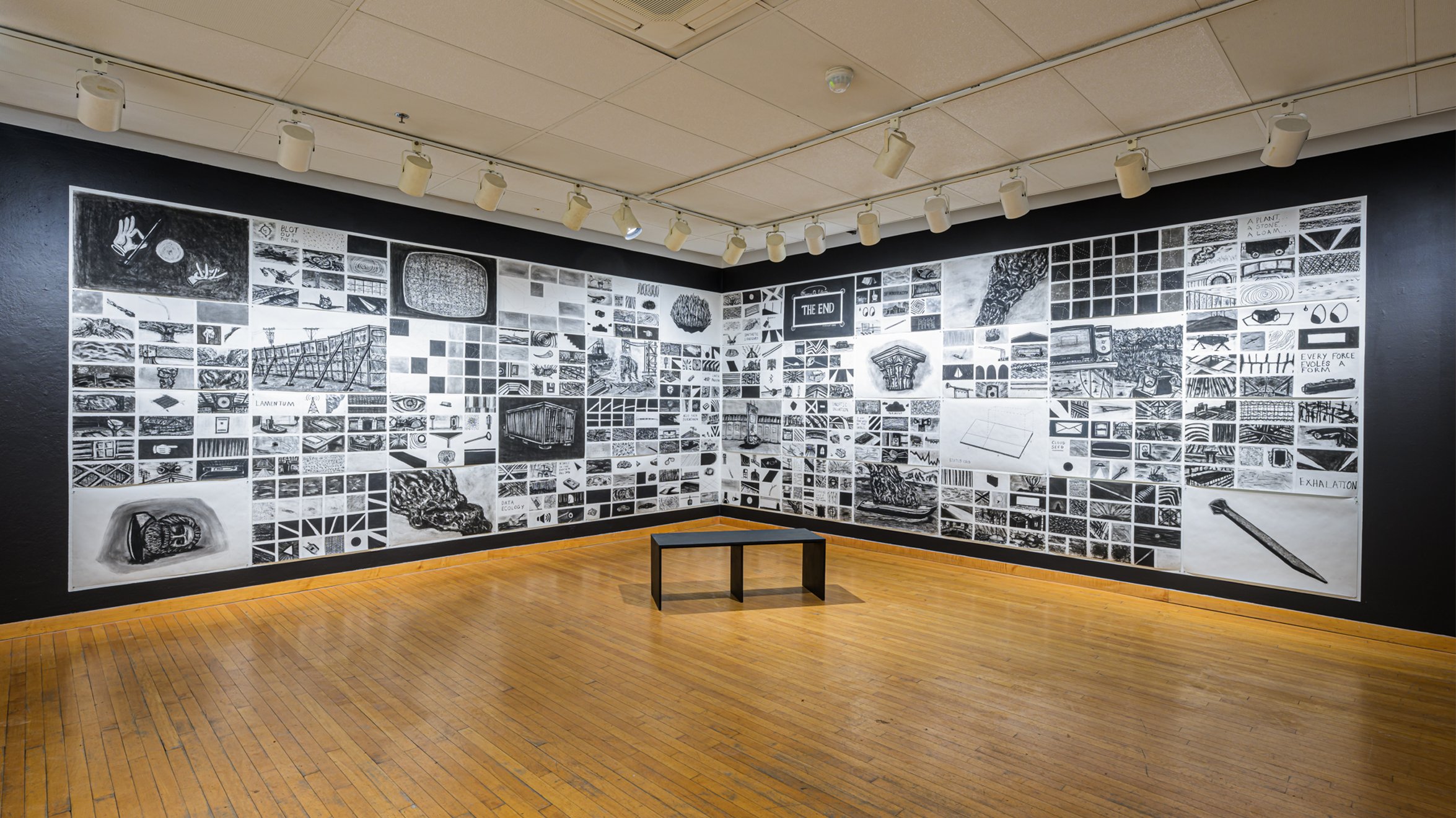
Current Perspectives Preview: Sean Starowitz
02.04.2025
Current Perspectives Lecture
Thursday, February 13, 2025
7 p.m. - 8 p.m.
Epperson Auditorium | KCAI
With a background in social practice, public art, and community engagement, Sean Starowitz (’10 Interdisciplinary Arts) has carved a unique path since graduating from KCAI in 2010.
Now, he’s coming back to share his insights, experiences, and thoughts on what it means to be an artist in today’s world.
Real Stories from a KCAI Graduate
When Sean Starowitz graduated from KCAI he was faced with the question of what path to take next.
“We graduated out of the [Great] recession, so grad school was kind of off the table and none of us really wanted to leave Kansas City right away,” he explained.
Instead, Starowitz and many of his fellow KCAI graduates chose to stay close to campus, where they could create their own opportunities.
For example, Bread KC was a microgranting initiative co-founded by Starowitz that focused on supporting local arts and culture projects in Kansas City. The program was designed to fund small-scale projects by engaging the community in the grant-making process.
The way it worked was simple: Bread KC hosted public dinners, where attendees paid a small fee—typically around $10 for a ticket. The proceeds from these dinners went directly into a mini-grant pool. At the end of each event, the collected funds were given out to individuals or groups working on arts and culture projects across the city. The grant amount started modestly, around $500, but over time it grew to as much as $1,500.
“It was mutual aid before mutual aid was a thing,” Starowitz said, emphasizing the power of combining social gatherings with grant funding—allowing artists and community members to connect directly, fostering a collaborative, grassroots approach to supporting local creativity.
“I was really curious about Kansas City and I wanted to be an active member in a community, and use art as a tool to do that.”
Image: Wind Challenge, Sean Starowitz
Empowering Public Artists
As his career has evolved, Starowitz has taken on increasing responsibilities. One notable role was serving as Public Art Director in Bloomington, Indiana, for five years. In this position, he managed grant programs and helped artists bring their public art projects to life—commissioning over a million dollars' worth of public art during his time there.
For Starowitz, the value of social practice is clear: it empowers artists to be active participants in their communities, using their work to tackle real-world issues. “Our job is about perception, right? Like we are about perceiving a visual world. So if you expand on that, it gives you another subset of responsibilities as an artist to consider,” he said.
“It’s less about having all the answers and more about acknowledging the right for people to ask questions of you and your work when you enter the public space.”
Full-Circle Journey
Reflecting on his years at the Kansas City Art Institute, he said, “KCAI really gave me the foundation I needed. Teachers that I had like Julia Cole and the ecosystem that was in Kansas City really taught me how to engage in public really well.”
Starowitz credits the city itself and organizations like the Charlotte Street Foundation and Art in the Loop for providing him with the opportunities to learn.
He describes his upcoming lecture as a full-circle moment, especially because of how important the school was to his own career trajectory. “This is like a really special lecture for me,” he shared. “I’m actually the most nervous I’ve ever been because of how special I view KCAI and my time there.”
“Art doesn’t exist in a vacuum,” he continued. “We are all interconnected—whether digitally, locally, or globally. Artists must recognize their role as active citizens in that interconnected web, and that includes addressing the social and political issues that affect us all.”
“And it’s not about having everything figured out. It’s about committing to your creative outlet and allowing it to lead you to unexpected places.”
Click here to see the full Current Perspectives Series schedule